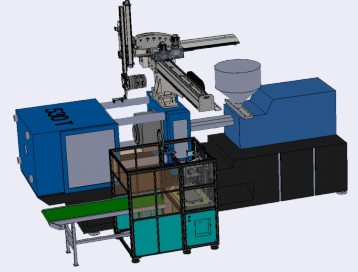While considering these basic elements of general directivity, we should also consider the initial realization mode of machine tool function. That is to say, the kind of process or method is adopted for molding. As far as the current molding methods are concerned, there are three ways. They are methods of not removing materials, removing materials and increasing materials.
The methods of not removing materials include casting, forging, extruding, cold rolling, bending, rolling, spinning, etc.
The ways to remove materials are turning, milling, drilling, planing, grinding, broaching, sawing, slotting, stamping, cutting, laser cutting, water cutting, flame-cutting, plasma cutting, spark erosion, etc.
The ways of adding materials are as follows: welding, layered contour machining (3D printer). We should determine the most suitable molding method as the most basic theoretical framework of the machine tool to be designed.
Determine the preliminary structure of the machine tool
Based on the above content, a preliminary layout scheme of the machine tool structure is determined. For example, the material provided by the customer to be processed by the machine designed by you is a long profile like I-beam (at this time, it is necessary to comprehensively consider the convenience, safety and other factors of the customer's feeding and blanking during machine tool processing, and consider whether the customer is processing in a single piece of processing in bundles at the same time). In this situation, we may tend to determine the general design idea, which is to adopt the initial strategy of fixing (stationary) the workpiece and moving the cutter and the cutter assembly during processing (such as laser cutting machine). Of course, according to the actual situation, the table (material) can also be moved (such as gantry milling machines).
After having a rough preliminary strategy, it is necessary to consider the production efficiency and precision requirements of machine tools. These two requirements must be determined in combination with the equipment cost. For example, whether the multi-station structure and the multi-head structure are adopted, and whether it is necessary to speed up the working speed of each part.
Higher speed requires more power driving. The higher speed is, the greater the inertia of the mechanism, and the lower the positioning accuracy. If the motor with high power and inertia is adopted, it will directly mean the increase of the cost.) At this time, the rigidity and center of gravity of the whole machine tool should also be taken into account, or the necessary structural resonance frequency should be considered. At the same time, it should also take into account the requirements of ergonomics. (For the operating position or some positions that need to be adjusted and operated frequently, the convenience of normal operation should be considered. )

Next: Manipulator Drive
Previous: Control Mode of Six-axis Manipulators
